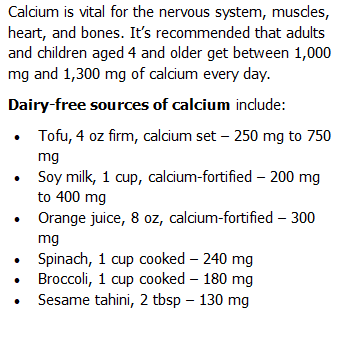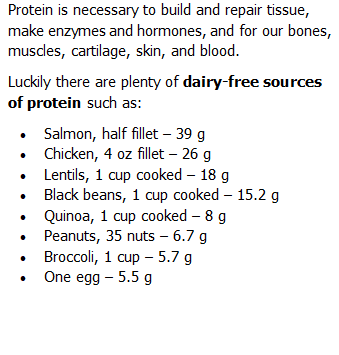
Yes, You Are Likely Lactose Intolerant! But No, You Don’t Have to Suffer!
Has almost everyone you know become lactose intolerant? Do those pains after your morning cereal mean that you are too? The answer to both those questions is probably yes, for two reasons. First, we are much more aware of lactose intolerance now, so are more likely to diagnose ourselves with the condition. Second, almost everyone becomes more lactose intolerant with age. The good news is there are plenty of ways to avoid the digestive distress that comes with being lactose intolerant.
What Exactly is Lactose Intolerance?
Lactose intolerance is an inability to digest the lactose sugar found in milk and other dairy products. In order for our bodies to absorb this sugar, we need our small intestines to produce an enzyme called lactase, which breaks lactose down for us.
When our bodies don’t produce enough lactase, the body has no way to break down the lactose. The sugar sits in the intestines and basically ferments. This triggers symptoms, such as diarrhea, nausea, abdominal cramps, bloating, gas, and strange abdominal noises. All those miseries are signs of lactose intolerance, especially if they occur about 30-90 minutes after ingesting lactose.
Why Do We Become More Lactose Intolerant with Age?
The simple reason is that our bodies have adapted because we generally need less lactase as we age. As infants, we produce significant amounts of lactase to digest the lactose found in breastmilk. Historically, once breastfeeding was done and solid foods were introduced, humans no longer consumed much lactose-containing food. And because humans weren’t eating as much lactose-containing food, our bodies adjusted and naturally began to produce less and less lactase enzymes over time, which means we are unable to digest dairy properly.
This reduction of lactase production is technically called lactase nonpersistence or acquired lactase deficiency. But most of us know it as lactose intolerance. For 75% of us, it starts developing as a toddler and gets stronger as we age. At a certain point, we begin feeling the symptoms and believe that we have suddenly been stricken.
Our chances of symptomatic lactose intolerance has a lot to do with our ancestry. African American and Asian ethnicities see a 75% – 95% lactose intolerance rate, while those with Northern European ancestry have a lower rate at 18% – 26%. If your parents are lactose intolerant, chances are you are or will be too.
How Can You Be Sure Your Symptoms are Lactose Intolerance and Not Something Else?
This is a great question because the symptoms of lactose intolerance are similar to the symptoms of certain infections or autoimmune diseases like gastroenteritis, celiac disease, Crohn’s disease, and ulcerative colitis.
There are two clinical tests that can confirm a lactose intolerance diagnosis. One that’s often used is a lactose tolerance blood test. After you consume a drink containing lactose, a sample of your blood is taken to measure glucose levels. If your glucose level does not rise, it means your body isn’t properly digesting and absorbing the lactose.
There is another, less invasive, test called the hydrogen breath test. This test also requires you to consume a drink that contains high levels of lactose. You then breathe into a bag that allows measurement of the amount of hydrogen in your breath. Normally, very little hydrogen is detectable. However, if your body doesn’t digest the lactose, the fermentation reaction in your colon releases hydrogen and other gases. Your intestines absorb those gases, and you exhale them. Larger-than-normal amounts of hydrogen measured during this test are a sign that your body isn’t fully digesting and absorbing lactose.
These tests are only necessary if you take steps to alleviate your symptoms of lactose intolerance and they don’t work. In those cases, you’ll want to rule out lactose intolerance as part of a series of diagnostic steps. Otherwise, your goal should be to determine how much and what type of dairy products you can enjoy without misery.
How to Manage Your Lactose Intolerance
It’s important to note that there is no “cure” for lactose intolerance, but a few simple dietary changes can help you alleviate or eliminate your symptoms. We each respond differently to different types of dairy products but there are a few general rules to consider:
Cows’ milk gets the most attention because it seems to be the major offender. There are tons of alternatives to cows’ milk available these days. As a matter of fact, plant milk is much better for you because you don’t get the cholesterol you’d normally find in animal products (like cow’s milk). Similar to milk in form and function, each plant milk option has a unique taste profile. If you drink milk in your coffee or your cereal, or even on its own, try these healthier alternatives to see which one might work for you.
- Almond milk is made by grinding almonds with water and straining out the pulp. It’s high in calcium and monounsaturated fat, a heart-protecting oil, and low in calories.
- Oat milk is made by soaking oats in water, blending, and then squeezing out the milk. It has a creamy consistency and taste.
- Soy milk is made the same way as oat milk. It is less creamy, but has fewer calories and twice as much protein as oat milk.
- Coconut milk is made by combining the grated meat of a mature coconut with water. It is often used in cooking recipes and can also be used as a drink.
- Hemp milk is made from soaking hemp seeds in water. It resembles a cream and is often used in coffee shops as a replacement for people intolerant or allergic to cow or soy milk.
If you can’t give up your cows’ milk, try drinking it with other foods instead of on an empty stomach. This makes it easier to digest. Try smaller portions, then gradually increase the level of milk you drink. Try whole milk instead of skim milk because the fat can help the passage of dairy through your digestive system. This is why ice cream is generally more digestible than milk 😊.
Try spreading out your dairy consumption – while you may not be able to drink a large glass of milk without finding yourself bent over in pain later on, you might be able to enjoy small servings of 4 oz at a time, spread out over the day.
Today, most grocery stores offer a variety of lactose-free cows milk products, including milk, cheese, and ice cream. These products are an option for individuals who struggle with lactose intolerance, as they contain added lactase enzyme to break down the lactose sugar found in dairy. It’s important to note that lactose-free products are different from dairy-free products. Lactose-free products are still made from dairy, so they are not suitable for individuals with milk allergies or those following a vegan diet. Brands like Lactaid® are known for their lactose-free options, providing the taste and nutritional benefits of dairy without the digestive discomfort.
If cheese is a favorite food for you, try a “mature cheese”! Most aged cheeses are lactose-free or contain only trace amounts of lactose and are often more easily tolerated by those with lactose intolerance. During the cheese making process, most of the lactose is drained off with the whey (a liquid portion). The small amount that remains in the curd is changed to lactic acid during ripening (aging) of cheese, so only trace amounts of lactose remain. Try an aged Cheddar, Parmesan, or Swiss cheese and see how it goes down. If you buy packaged cheeses, check the label to see how much lactose it contains. Lactose levels of 0.5 grams or less are considered “trace”.
Similarly, Greek yogurt has had much of the whey strained out. This is what makes the Greek yogurt thicker and lower in lactose than regular whole milk yogurt. It is interesting to note that fat-free yogurt has the most lactose, twice as much as in Greek yogurt.
Finally, you could try taking lactase enzymes, available as over-the-counter medications. These products replace the lactase that your body has stopped producing to help you digest lactose.
Replacing Dairy Nutrition
If you are going to reduce or eliminate your dairy intake, you need to be sure that you are still getting all the good things that dairy provides. That means increasing your non-dairy sources of protein, calcium, vitamin D, and vitamin K-2. Here are some ideas:


The Bottom Line on Lactose Intolerance
You are not imagining it. Chances are you have become more lactose intolerant as you have gotten older. But you don’t have to suffer the digestive indignities of the condition and you don’t have to do without your favorite dairy foods (unless you want to).
First, eliminate the foods and beverages that cause you the most distress. Then, replace them with low-lactose or lactose-free alternatives. If you change your diet and still have symptoms, you might want to consider checking to see if your symptoms are being caused by lactose intolerance or something more serious.